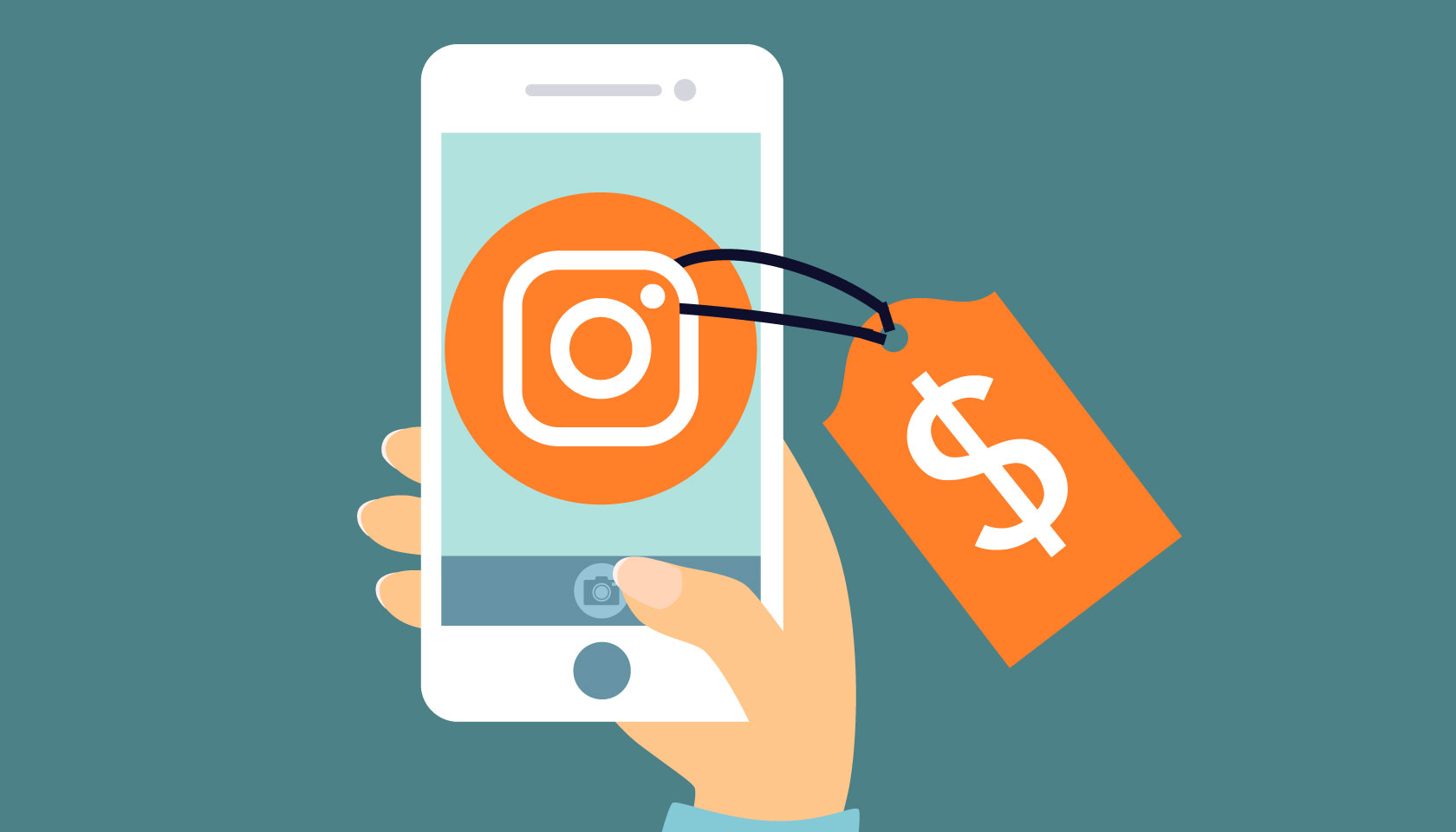The popularity of Instagram is rapidly growing day by day. According to the Statista 2018 report, this is the 6th most popular social media network in the world with the leading interaction rates. Recently, Instagram reported that they have more than 500+ million worldwide profiles which are active every day, and more than 80% of all users follow at least one business page.
Lately, we notice the tendency of using YouTube instead of Google. It has become clear that Instagram marketers have also decided to extend their network’s functionality and encourage people to use Instagram instead of Google. In particular, by the new e-commerce features which were developed in cooperation with BigCommerce and Shopify. These novelties allow millions of any-scale worldwide retailers to offer their products via Instagram accounts, gather feedback, retain their customers, and draw them directly to their websites for purchasing.
In this article, I will try to show some Instagram e-commerce solutions which could help e-store owners boost traffic to their website and improve their customer loyalty, as well as demonstrate how creativity is vital in the era of visualization, and how this can bring you revenue.
Product Tagging
The latest and the most effective e-commerce profile feature is a shoppable photo tag. Instagram’s shopping service was successfully launched in the United States in October 2017. This March, finally, the feature extended and became available in 44 other countries.
The main Instagram shopping feature lies in the ability of e-commerce businesses to tag item prices and include special offers to the photos they publish on their business profiles, as well as connecting these products with an item page on their website. Retailers can also add a description to every appropriate tagged product which can differ from the main text content in the post; this will appear after a user has tapped on the price.

A seller can tag up to 5 prices to one photo, and up to 20 prices on a carousel post. In a feed, such posts are pointed with a tiny basket icon. Also, the “Shop” section appears on the home Instagram page automatically.
To implement this feature into the Instagram account, a retailer has to have a full catalog with the same range of goods on their Facebook page. All products must comply with the Facebook Commerce Product Merchant Agreement and Commerce Policy. Retailers must offer Instagram users only physical products, apart from tobacco products or paraphernalia, alcohol, weapons, ammunition, and explosives. Sellers cannot sell animals, any healthcare products, notably including “before and after” images, downloadable digital products, virtual currency, and, certainly, products and services with overly sexualized positioning.
What about services? Agencies are able to offer services, whether it is cleaning or a promotional service, as well as event tickets, but only with Facebook written permission. Each e-commerce owner who plans to sell their goods via shoppable Instagram posts should also obtain approvement from Facebook moderators.
Managing an Instagram shop is available through Facebook Business, Shopify or BigEcommerce accounts.
Instagram Saved Stories
Instagram has forbidden posting links to a website anywhere apart from the bio section. However, since Instagram accounts which have more than 10,000 subscribers received the opportunity to add direct links to their stories, Instagram became a fruitful sales channel for many retailers. Thanks to the usability, a user can be taken to a website using one swipe.
Along with that, Instagram allowed users to save their stories into different folders. A majority of e-commerce accounts find creative approaches for the new section. One of them duplicated the main website categories, and others – split stories with links “see more” to new folders as “summer must-have,” “best-sellers” or “customers” choice.”

We studied 30 Instagram accounts of the most-visited UK e-commerce stores and found that 14 of these use categorized saved stories with direct links to their websites as an extra and convenient way for users to find a desirable product. The option is catching on.

Tags Which Work as Filters
This solution is useful for sales or special prices. When you offer discounts for a specific group of products, you can create a separate tag below each post which contains any of these offers. This way, a customer will be able to see all products at a discounted price by clicking this hashtag. And a retailer, thanks to the “editability,” can easily remove irrelevant hashtags at any time.
For instance, a store “Berry” offers discounts for all green dresses for St. Patrick’s Day. Announcing this on Instagram, they can create a unique tag #GreenBerrySale in this post and add this to all posts with green dresses.
New e-Commerce Features – Coming Soon to Instagram
Instagram is planning to evolve business profiles, and they have been testing new features which will be launched in the very near future.
Instagram Booking And Native Payment System
According to a Techcrunch report, Instagram stakes on booking. Developers stealthily added a native payments feature into the app for some users. Today, this is available for electives from the US only, but it is conceivable that Instagram users will soon be able to book a cinema ticket, apartments or a restaurant directly via an app in the future — no redirecting to websites required.

In the future, Instagram is planning to expand their payment system opportunities to allow users to purchase items at a retailer’s online site inside Instagram, by opening a separate pop-out page and following standard online checkout processes.
It is interesting to note that if Instagram implements their native payment system, for the purposes of e-commerce, they will become a hybrid model of a marketplace. And this can radically change the primary vision of this social media network.
Shoppable Video Ads On Instagram
In February 2018, Instagram started testing “collection” campaigns on Instagram. Brands and companies will be able to post their media campaigns with an attached catalog of products used in the video ad. This option consequently reduces the customers time to purchase.

Is Instagram a fruitful sales channel for large e-commerce today?
According to research discussed by SmartInsights this year, more than 1 million brands are sharing and promoting their products as well as stories on the social network. Moreover, over 75% of Instagram users take action, such as visiting a website, after looking at an Instagram advertising post.
By expanding shopping features to new countries, Instagram presented high results for businesses that started using price tags in Autumn 2017. For instance, they said that accessories brand Native Union announced that thanks to the new feature, their Instagram traffic has increased by 2.666 percent and their revenue – by 100% MoM.
Examining European Businesses
We decided to check if shopping on Instagram has become effective for European business profiles since its launch in March 2018. We studied Instagram profiles of the 30 most visited UK online stores within the following niches: clothing, сonsumer electronics, furniture, home and garden, children, and jewelry.
We found out that 46.7% of these already use Instagram shopping and 53.3% do not. In the image below we can see that all retailers which sell clothing implemented this novelty into their profiles. As well as more than half of home, garden goods and furniture retailers; they have realized that their target audience is actively following them on Instagram and it is a good place to reach their targeted audience.

We also checked how their traffic from Instagram has changed since the shopping feature launch. To find this out, we compared the traffic data of three popular e-commerce websites in February and May.
As we can see below, the traffic has increased in most cases, but generally, this share is insignificant. The majority of traffic from social networks comes from Facebook, followed by YouTube and Reddit. Is this due to marketing strategies or lack of options for users? More examination is needed, but we do know Instagram’s upcoming opportunities for e-commerce should be helpful to businesses with or without added website traffic.

Final Thoughts
Instagram is becoming more e-commerce-friendly, and this is easy-to-see from their new “One Tap Shop” feature, as well as from “Now More” function in stories or promotion posts. And as discussed above, they are also working on the native booking and payment system.
The Instagram interface allows e-commerce owners to adapt their accounts into user-friendly “websites”. In many instances, their profiles look better than the company websites. New solutions are molding Instagram into a level playing field for e-commerce players. A business’s popularity, engagement, and traffic to the website have become directly dependant on their creativity and marketing strategies.
Instagram’s popularity is growing, and thanks to the creativity of marketers and social media specialists today, Instagram can bring any-scale e-commerce business real revenue.
By
I’m a content specialist at Promodo Digital Agency. I’m always seeking for fresh data and actual facts to bring relevant ideas to the audience. I believe that useful content can enrich the experience of marketers and empower businesses to make the right decisions fast and accurately.














